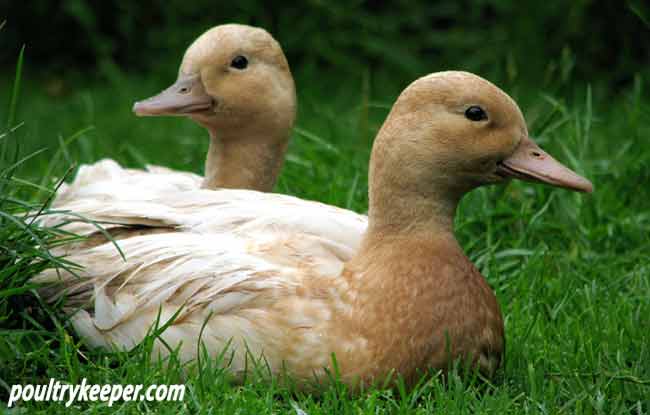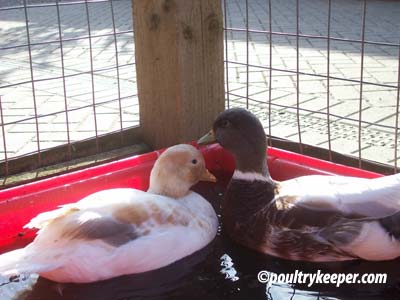At one time Call Ducks were known as Decoys and were fed or tethered at the entrance to long traps. Their loud calling would entice wild ducks into the traps which would then be caught for commercial use. Calls have been known in Britain since the 1850’s and was one of the first few breeds to be standardised in 1865.

Originally bred from the mallard, these little ducks are lively and full of character. They have a small body, short beak and a loud call, especially the girls! Call ducks are talkative and easy to tame although they can use a great deal of your time watching their antics! Drakes usually weigh between 500 and 700 grams whilst the ducks are between 450 and 600 grams.
Calls come in various colours – apricot, chocolate, silver, magpie, white and blue fawn to name but a few. A full list of colour varieties standardised in Britain and America can be found on the Call Duck breed page.
General Hints On Care
Keeping Call Ducks is very similar to keeping other ducks but because they are small they do have a few special care requirements.
The first thing to consider is a secure, vermin-proof area for the ducks to sleep in. There are many commercial hen and duck houses available, but a shed or home-made duck house are just as good so long as they keep the birds safe from foxes and other predators. If the Calls cannot be free-range a mobile run is a good alternative. We find that mobile runs mean the birds can have different areas of grass to nibble (saves your lawn!) and in unpleasant weather they can also be moved to a more sheltered area.

Like all ducks Calls need water to drink and to swim in. They are very happy with washing up bowls for swimming in although ours have rectangular plastic containers usually used for under-bed storage and plastic children’s sand pits are good too.
To help them get in and out we use house-bricks both inside and out of the container. Of course, a pond or even a tin bath sunk in the ground is perfectly suitable, but do make sure that the birds can get in and out easily.
The water should be cleaned often as the ducks will drink it and stagnant water will harbour disease.
Our Calls keep well on whole wheat fed under water and layers pellets but there are specialist duck feeds available. They should be given small amounts of mixed poultry grit to help grind food in the gizzard and to provide extra calcium in the laying season.
It may be necessary to break down the larger particles in the grit because Calls are smaller than other ducks. Ducklings need specially prepared food, usually known as crumb or starter pellets. There is more information on this site about feeding laying ducks here.




